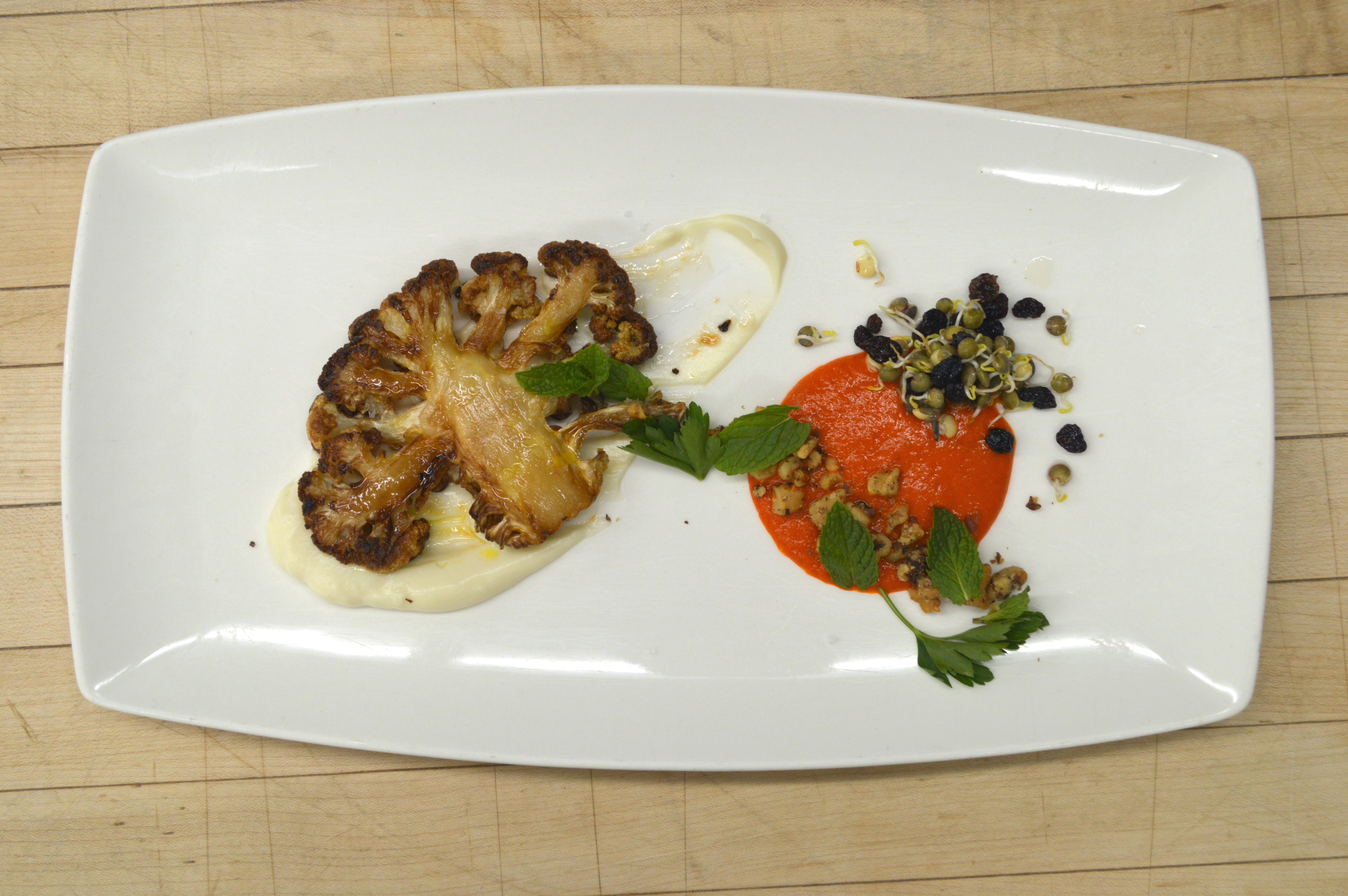Yotam Ottolenghi is one of the most influential chefs in the world right now, for both home cooks and professionals. His books Jerusalem and Plenty are entirely vegetarian, and must-reads for contemporary cooks. They are great because the techniques are simple, but he takes them further than usual and produces brave, vibrant dishes. By giving vegetables simple treatment and then going wild with nuts, fruit (fresh and dried), spices, herbs, and cultured dairy, he has provided a watershed repertoire and vernacular for professional chefs who want to feature vegetables more prominently. Some of his dishes have been wholesale adopted as modern classics by small-plates restaurants. His Moroccan Spiced Carrots and Yogurt dish alone I have seen variations of at Hawthorn, Ernest’s, Tryste, and others. He is also certainly the reason you regularly see things like za’atar, muhammara, dukkah, and zhoug, on menus in Edmonton and Calgary.[1]
Anyways.
This week I made a cauliflower dish that smacks of Ottolenghi, though the inspiration was rather more roundabout.
I started thinking about a cauliflower dish when I saw “Cauliflower, roasted, with grapes, almonds, and curry,” in the Eleven Madison Park cookbook. I love, love, love the flavour and texture of heavily roasted cauliflower. And this EMP dish had very familiar flavours for me. At Elm Café we regularly ran a salad of green lentils, roasted cauliflower, and raisins, dressed with a madras curry vinaigrette.
The EMP dish features what I would call a “cauliflower steak”, a slice taken from the centre part of a head of cauliflower that shows the tree-like cross section of the core and its branches. This is an attractive presentation, but it produces a lot of trim. Only the slices that are fully adhered to the central stalk stay together as a steak. All of the outer bits fall apart, some in nice florets, others in irregular crumbly cauliflower.
The EMP dish uses this trim in two ways: a cauliflower “couscous” and a simple but delicious cauliflower purée. I’ve tried the various vegetable “couscous” and “caviar” preparations in the EMP cookbook and am still on the fence.
While I was admiring and contemplating the EMP cauliflower dish, one of my students made a salmon plate with roasted cauliflower and muhammara. This really got my wheels turning and brought the whole cauliflower idea to the Middle East.
At its core my dish is cauliflower and muhammara.
For the sake of appearance and texture, let’s deconstruct the muhammara: forget about the breadcrumbs, and make the walnuts a distinct element.
Now we go full-on Ottolenghi. Press the technique: make sure the cauliflower is very deeply and uniformly browned. Then punch it up with citrus, dried currants, mint, parsley, et c.
Then I couldn’t help myself. I needed a call-back to the Elm Cafe salad. And it just so happened that I had been sprouting legumes. Sprouted legumes are more health-food-store than fine-dining, but I had seen a few sprouted chickpeas used as a garnish in the EMP cookbook. While I have sprouted things like alfalfa and clover many times, I have never sprouted legumes. The process is identical, so I gave it a go.
This dish has a really weird colour palate to me. The cauliflower has a natural, dark, brown colour, then there is the creamy white of the purée, and the stark red and black of the pepper sauce and dried currants.
Roasted Cauliflower – bell pepper, walnut, currant, sprouted lentil, mint, parsley.

Footnotes
- To cherry-pick an example, the menu at Hawthorn in Calgary right now, in addition to having a dish of roasted carrots with yogurt, has za’atar on the French fries, pumpkin seed dukkah on the roasted cauliflower, and zhoug on the beef striploin.